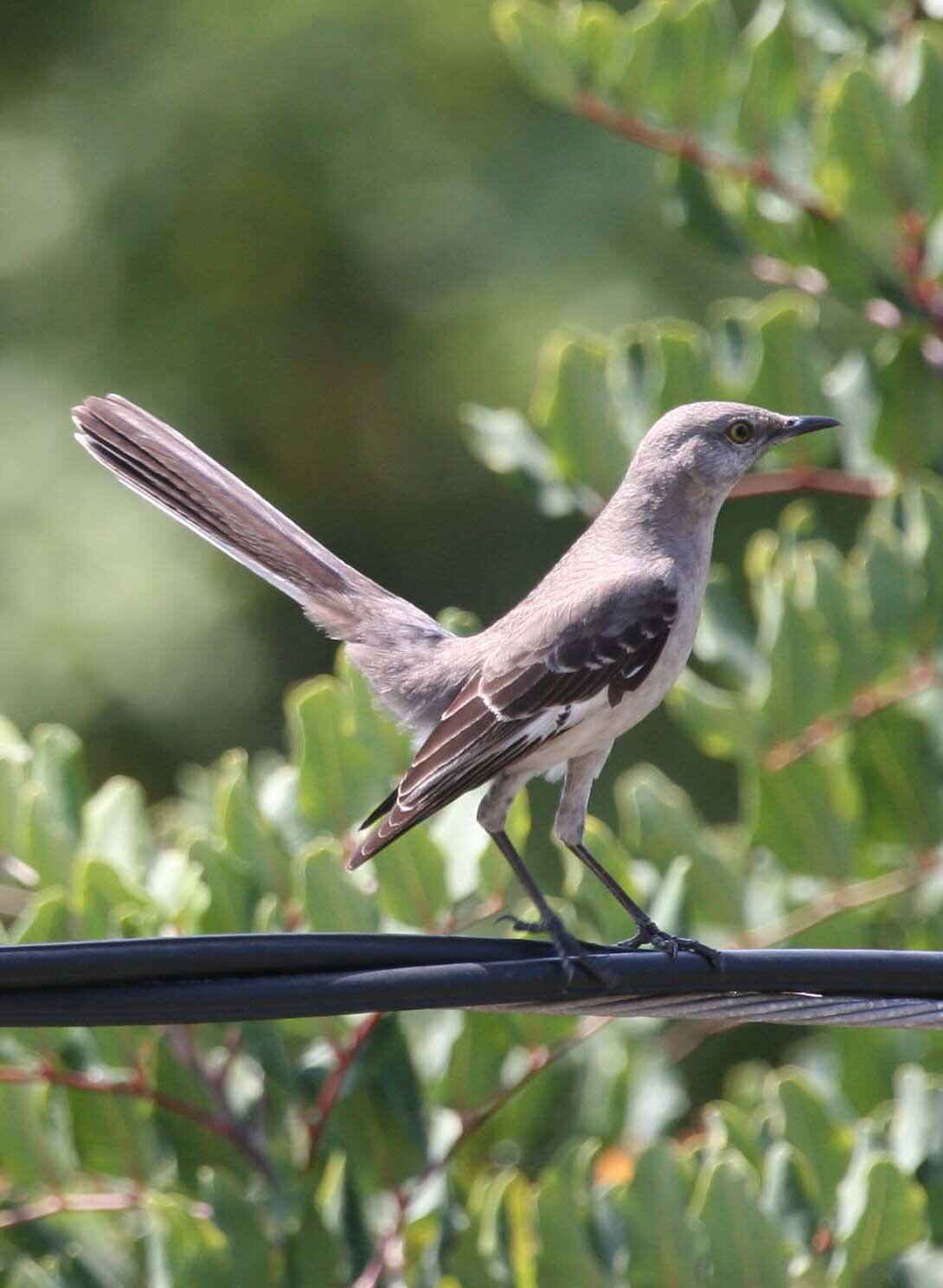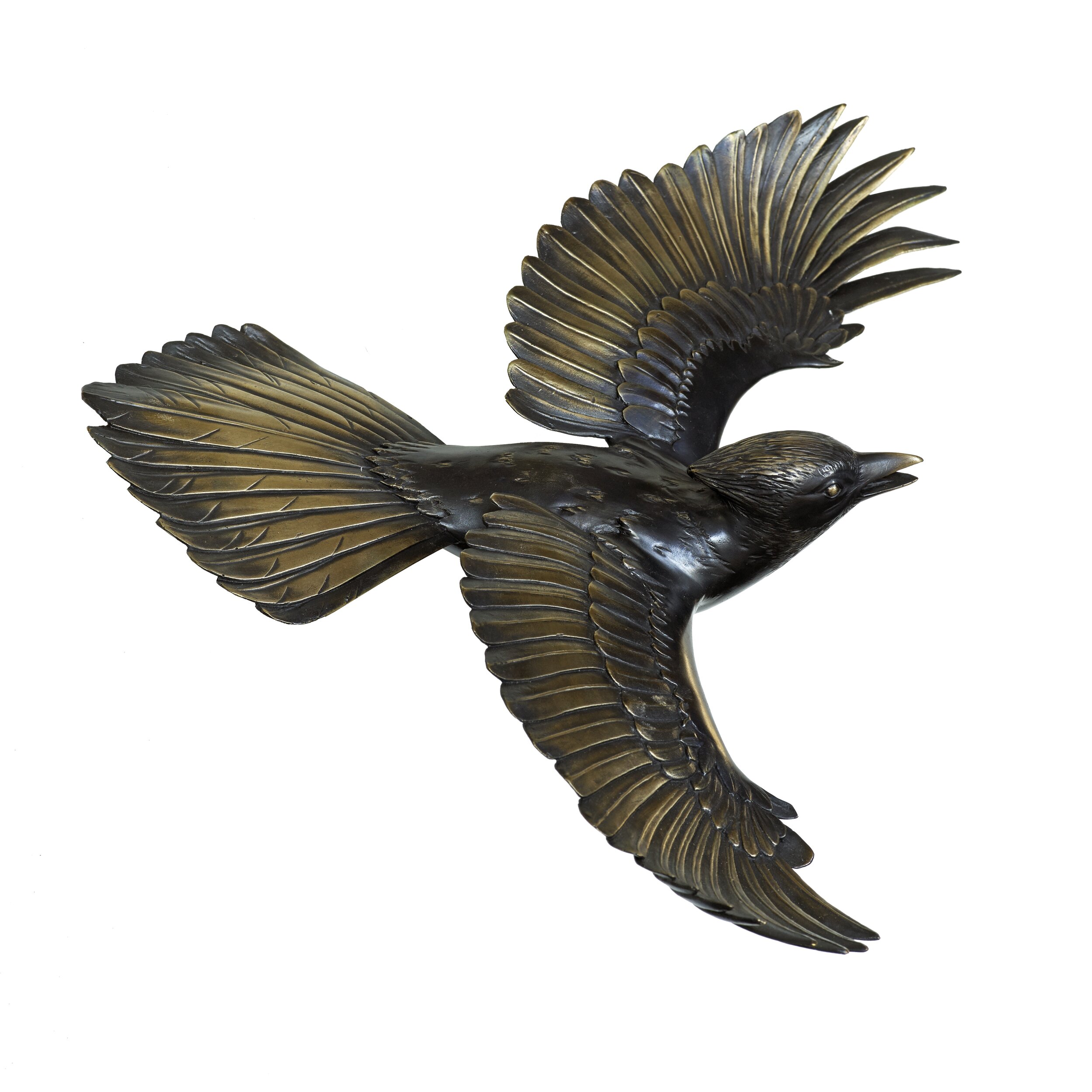While our lives may have been disrupted by the corona virus, this has not impacted our local bird life and our neighborhood is very much alive with the sounds of squabbling and aggressive birds. Mockingbirds have made a nest in the bougainvillea bush in our neighbors garden and the parents are feeding their young with petals from our guava tree and battling and haranguing any potential predators that come too close to their young chicks. The predators who pose a threat include squirrels and cats who despite their claws and size are no match for the mockingbird bombers who dive and peck them ceaselessly.
Alert Parent of young Mocking Bird chicks on guard for predators
These admirable parenting qualities are not limited to the mocking birds and a pair of scrub jays, thankfully nesting in a different tree, spend large amounts of time battling and diving at crows, ravens and the occasional Cooper’s hawk who are local habitants of the Hollywood Hills.
We have lived in the hills for many years but never grow tired of the local bird population which continues to inspire our work. What is still remarkable is the incredible variety of bird life that we see and hear, and which vary with the season’s migratory paths. The beautiful oriels with their orange chests have arrived as have the rufous hummingbirds and both compete for the sugary solution of our bird feeder. To accommodate the oriels larger and wider beak we have removed some of the artificial flowers on the feeder which occasionally results in the odd bee finding its way inside.
Juvenile Mocking Bird Learning the Value of Guava Flowers
If you are searching for an unusual bird cabinet pull or possible a jay door handle then you may want to visit these pages on our site.






